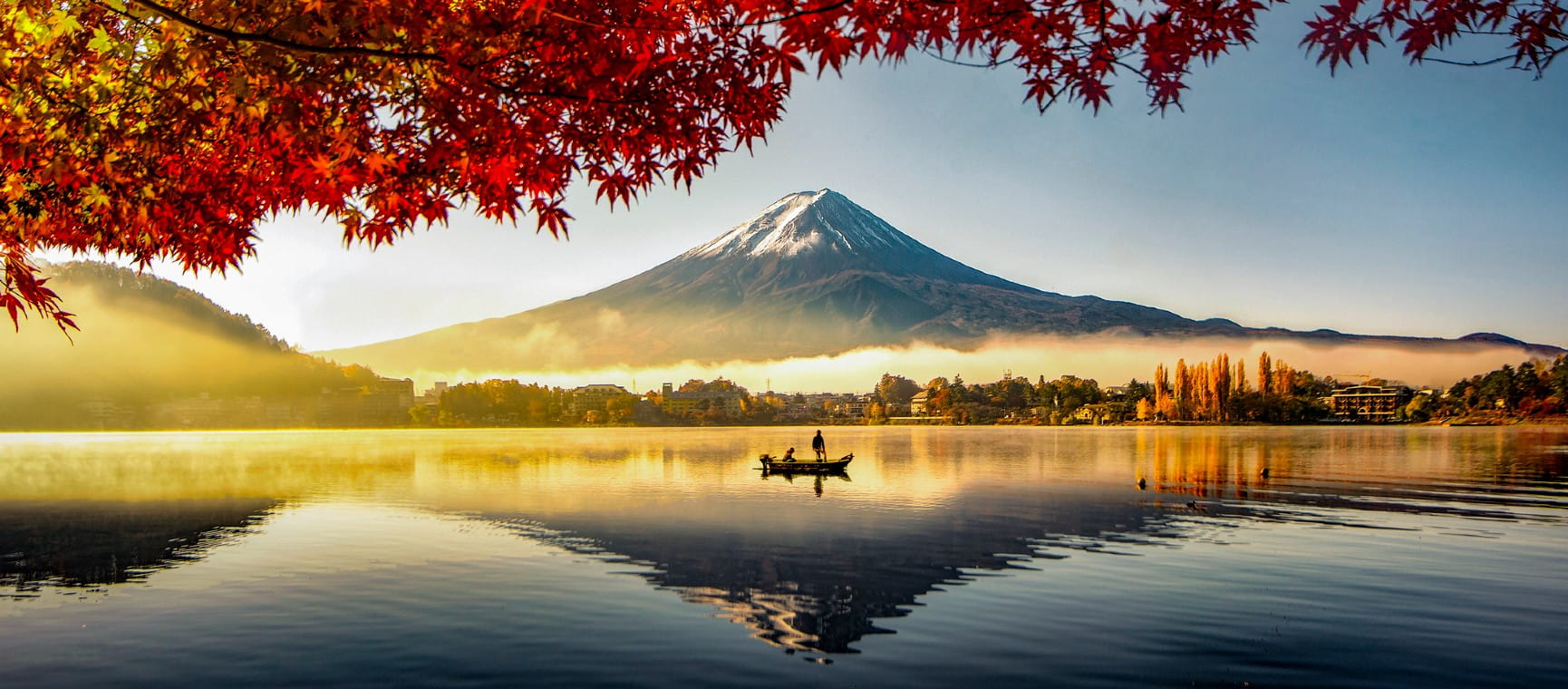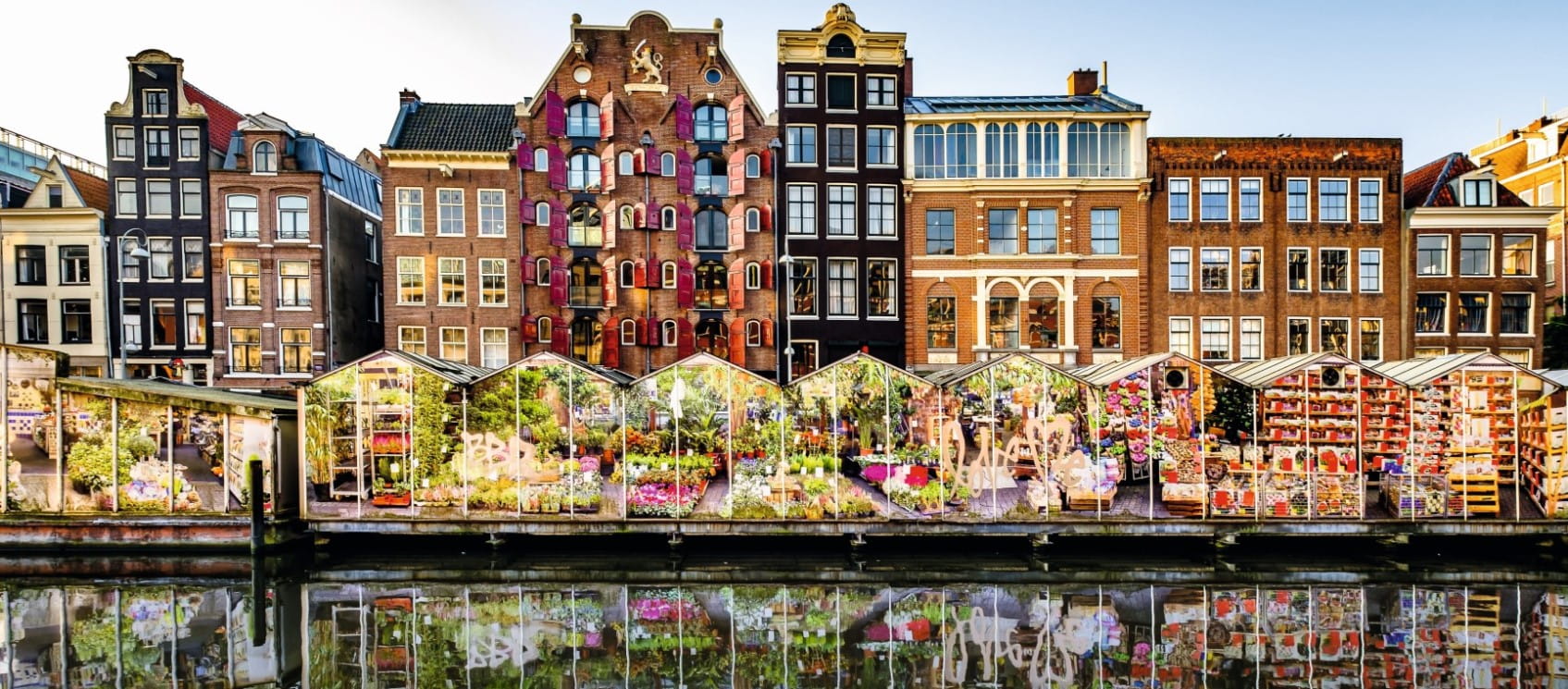Why autumn is the best time to visit Japan
Vibrant colours and colour temperatures make autumn the perfect time to visit the land of the rising sun as best-selling author Chris Broad explains.

Vibrant colours and colour temperatures make autumn the perfect time to visit the land of the rising sun as best-selling author Chris Broad explains.

"Japan has four seasons."
If you spend any time around the expat community in Japan, you’ll likely hear this phrase tossed around, usually with a hint of irony.
That’s because it’s often repeated on Japanese television, in books and media, as well as by colleagues – in my case, in the school I worked in, in the rural north of the country.
Each spring, my supervisor would remind me like clockwork, "Remember, Chris sensei, Japan has four seasons," much to my bemusement. At first glance, it seems a bizarre thing to emphasise – after all, most places on Earth experience all four seasons. Japan isn’t unique in that regard.
However, during my decade living in the Land of the Rising Sun, I’ve found that it’s not so much an observation about the climate, but a reflection of the profound appreciation and celebration of the seasons that permeates Japanese culture.
Here, each season is not merely a change in weather but a distinct chapter of the year, marked by its own key traditions, festivals, and even flavours.

Winter or 冬 (fuyu), between mid-December and mid-March, is far from being just cold. It brings with it the serene beauty of snow-covered landscapes and the warmth of shared meals indoors, dipping marbled cuts of wagyu beef into sukiyaki hot pots and slurping down hearty bowls of ramen broth.
Experience winter like never before with this magical 13-day tour.
From awesome ice sculptures to adorable snow monkeys, this incredible itinerary is sure to leave you enchanted.
Book here
Spring or 春 (haru), from mid-March to late May, isn’t all about cherry blossoms; it’s about the fleeting beauty of life, captured in the brief bloom of the Sakura trees.
Across the country, folks indulge in hanami (花見) "flower viewing parties", expressing cheers with a can of beer beneath cherry blossom trees while relaxing on blue tarpaulins, hunched over bento lunch boxes.
Scenic cruises, sweeping views and serene temples await on this thrilling, 22-day adventure.
Spring is also the best season to experience Japan's famous cherry blossoms – they'll take your breath away.
Book here
Summer or 夏 (natsu), running from early June to mid-September, has more to offer than simply its oven-like temperatures.
The brighter, warmer months bring the excitement of festivals and fireworks that light up the night sky.
In the region of Aomori, in the far north of Japan’s main island Honshu, locals erect towering 23-metre floats depicting legendary characters meticulously crafted throughout the year, and parade them through the streets to the sound of cheering and taiko drums.
The nationwide Tanabata festival takes place on 7 July (7 August in some regions), with the biggest and most famous celebration on Sendai (6-8 August), in the northeast of Honshu.
Here, residents drape beautifully crafted paper lanterns along the streets and decorate lavish bamboo poles in preparation for the festivities.
This 14-day tour offers a packed itinerary, covering everything from Sumo wrestling to Samurai culture, tea ceremonies to train rides.
Book hereAutumn or 秋 (aki), from mid-September to mid-December, brings cooler temperatures and time to savour the vibrant colours of turning leaves and the harvest’s bounty from the rice fields that blanket the countryside.
Such is the country’s celebration of autumn colours that there’s a word for it in Japanese: kouyou (紅葉). It brings a shared sense of joy around the country as for the first time in almost three months, the outdoors in Japan is no longer essentially uninhabitable, following the brutal hot, humid months of the summer.
For many, the cherry blossom season in spring is the standout time of year. However, for me, my heart lies in the autumn months.
In the rural, mountainous area of Yamagata, in the Tōhoku region of Honshu – a place I was very fortunate to call home for three years – the local custom in the autumn is to hold "Imoni" parties by gushing rivers. Imoni is a nourishing umami-rich stew filled with potatoes and juicy cuts of beef and pork, washed down, of course, with liberal amounts of Sapporo beer.

Other seasonal culinary highlights include the sweet scent of roasted chestnuts and grilled Matsutake mushrooms, the smell of which drifts through the air of rural villages across Japan.
There are other reasons to love the autumn, too. While in spring the pink cherry blossom punctuates the luscious green foliage of the mountainside, in autumn the entire mountainside erupts into a sea of colours – red, orange and yellow.
In the ancient capital of Kyoto, the vibrant hues of the maple and ginkgo leaves can be enjoyed while wandering the gardens of the Kiyomizudera temple, high above the city. Nature’s fireworks display turns every tranquil train ride through the countryside into a viewing spectacle, with the best sights for those able to find an outdoor onsen hot spring.
There are few sensations in life that are more pleasant than dipping into the warm, soothing, mineral-rich waters of a hot spring with the top half of one’s body outside the water, gently massaged by the cool autumn wind, all the while gazing upon the serene mountainscapes of Japan.
From the hot spring town of Hakone, travellers can witness the first snowfall of the year begin to settle on the peak of Mount Fuji, towering 3,776m above.
In Kusatsu, so hot are the 50°C waters that skilled locals use a centuries-old technique known as yumomi, employing large wooden paddles to stir and aerate pools of water bubbling up from deep underground, to lower the temperature for the perfect bathing experience.
Autumn is certainly an overlooked travel season, and I’d encourage first-time visitors to Japan to make the journey then, before the Siberian winds begin to deposit any snow, leading to a stunning – albeit inaccessible – winter wonderland.
I moved to Japan from England in 2012 and in all my years of living here, I’ve yet to meet an overseas traveller who’s visited the country during the autumn and not been captivated by its beauty.
Savour the sweet warmth of roasted chestnuts, soak in a soothing hot spring and peacefully gaze upon the kouyou of the nation’s towering peaks, and you’ll experience what makes Japan so unforgettably rewarding to explore in the autumn.
Abroad in Japan by Chris Broad (Penguin, paperback RRP £10.99). For Japan travel tips and itineraries, check out the Abroad in Japan YouTube channel.
This epic, 22-day excursion provides a real melting pot of experiences, from vibrant cities to rural castles, spectacular gardens to steaming volcanoes.


Your chance to win a five-night river cruise with Saga worth almost £3,000, exploring some of Germany's most culturally-rich cities.

Saga offers escorted tours throughout Europe and as far afield as Canada, Australia and even Uzbekistan, plus hotel stays in popular European hotspots including Spain, Portugal and Greece.
Find your perfect holiday today.



Whether your perfect beach holiday is just sun, sea and sand, or if you like a bit of sightseeing, shopping or snorkelling thrown in, one of these might be your ideal destination.

Jetting off to Italy’s ‘Eternal City’? We reveal the best places to visit in Rome, from ancient temples to al fresco dining with a view.






Autumn on Europe’s rivers is always spectacular. We’ve got the best cruises to try in 2025.
